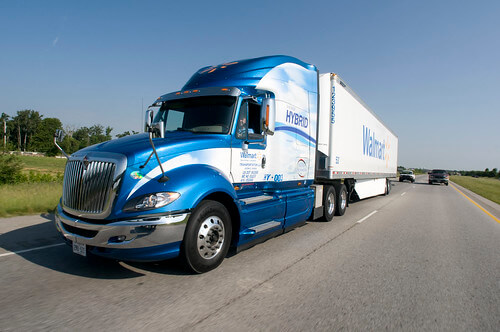
Photo courtesy of Walmart Corporate(CC Attribution)
It’s no secret to motor carriers and commercial truck drivers alike that one of the biggest risks a tractor-trailer presents to a passenger vehicle is the risk of underride. Underride occurs when a passenger vehicle strikes the rear or the sides of a truck’s trailer—part of the car is sheared off, while the rest of it is wedged beneath the trailer. 98% of the time, these accidents are fatal to the passenger vehicle’s driver or a passenger.
How to address these risks has been a topic of conversation among US safety officials since 1969, and despite conversations like a roundtable held earlier this year, adoption of new safety measures is slow. Semis are now federally required to have a rear underride guard on their trailers, but these guards aren’t always attached securely or constructed to meet the law’s requirements.
Speak with a personal injury lawyer today. Call: 317-488-5500
Further, these rear guards do nothing to protect drivers from the risk of side underride. This presents risk to drivers not just during a crash, but also when semis are turning. Two men were injured on Indianapolis’ west side on August 12, 2016, when a commercial driver made an illegal U-turn with his truck, did not see their car, and trapped the vehicle underneath the side of the trailer. As other safety measures like automatic braking are rapidly adopted by the commercial freight industry, we hope greater underride protection will also become common.
Have you been injured in an accident involving a commercial vehicle? Christie Farrell Lee & Bell has an experienced team of semi accident attorneys who can help you explore your options.
Call 317-488-5500 or complete a Free Case Evaluation form
